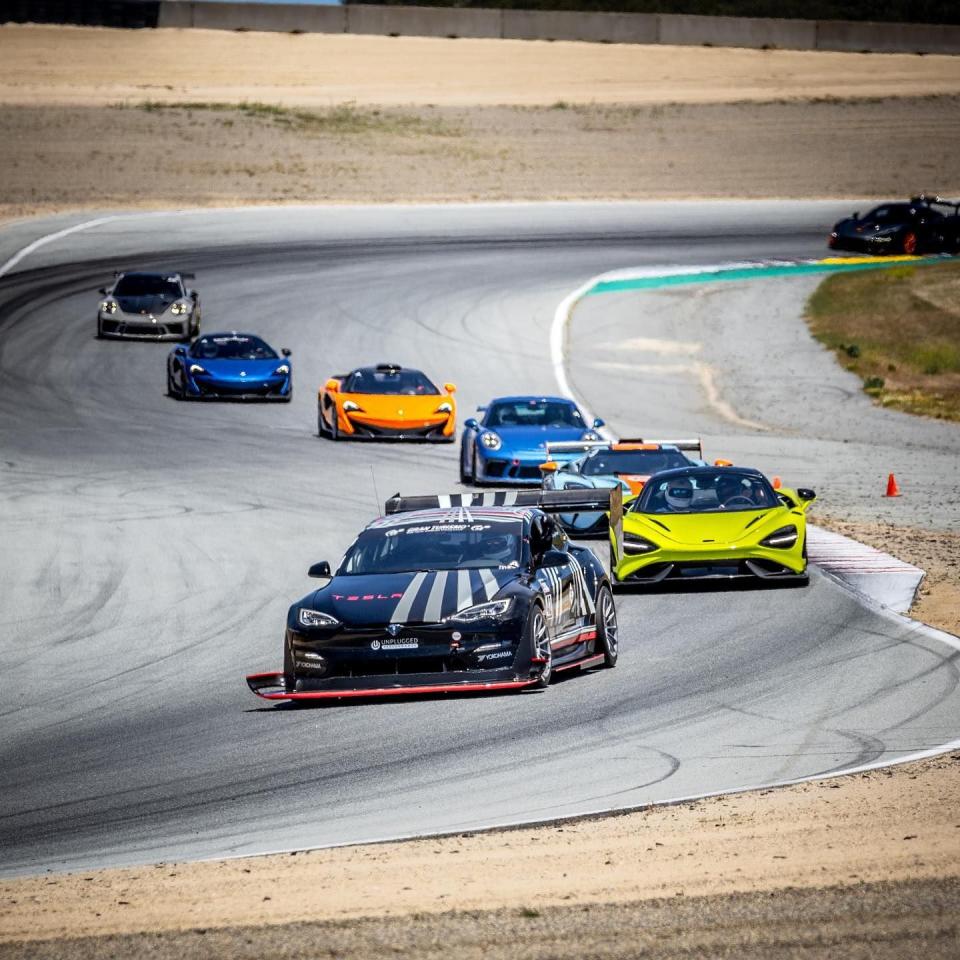Racetracks Need to Embrace the DC Fast Charger

The age of the internal combustion sports car as we know it is rapidly drawing to a close. As the world’s greatest enthusiast automakers start to develop and manufacture battery-powered products, these machines are destined to become more prevalent at performance driving events. What's missing everywhere from an autocross in a local parking lot to an HPDE day at the track? Access to high-speed DC fast chargers.
There is no denying the fact that electric vehicles are already some of the most impressive performance machines on the road today. Every month it seems like another four-digit horsepower-packing EV arrives on the scene, posting acceleration figures we’ve never seen this side of a VHT-laiden drag strip. As impressive as that straight line performance has proven thus far, EVs on the whole have yet to capture the same admiration from the corner-carvers as combustion vehicles. Using that sort of horsepower requires big batteries to keep things moving, which brings the penalty of added weight. That’s something you can’t entirely escape on the track, regardless of how clever modern suspension and braking systems are. Thankfully, automakers are able to install those packs down low in the floor of the vehicles, which provide impressively low centers of gravity. Regardless of the giant batteries that are becoming more prevalent in performance EVs, range can still be an issue when you start unleashing those electrons with intention. Hard acceleration and maintained high speeds chew through range at a much higher rate than your typical commute. While the US Department of Energy notes that the number of EVs with at least 300 miles of range has tripled compared to the 2021 model year, doing a full set of sessions and getting home on one charge is still out of reach for many of the current offerings. The large batteries required to reach those range figures also take longer to charge than a smaller capacity unit.

A number of tracks across the country have already started to invest in improving or installing charging options on site, but there are still comparatively few options for drivers of performance EVs. Level 1 and Level 2 chargers are an accessible option for many tracks, but the slower rate they charge vehicles will prove tricky between large group lapping sessions. As more and more drivers at the track end up in battery-powered rides, that problem isn’t going to get any better. Not every track in the country will have the financial means or the access to the amount of electricity required to support fast charging either, which can offer 50-350 kW of power for charging. Drawing that much electricity can be a tricky dance with energy providers and our aging infrastructure, particularly when you want a few of these things running in one place.
President Biden’s recent bipartisan Infrastructure Law aims to alleviate some of that strain and increase access to Level 3 chargers with some 500,000 new charge points slated to be installed nationwide. Regardless, tracks that have the means to get Level 3s installed really ought to do so. If performance EVs continue down the same trajectory we are on now, it's going to be the only way we can continue to enjoy our pastime in a timely manner.
You Might Also Like

 Yahoo Autos
Yahoo Autos 